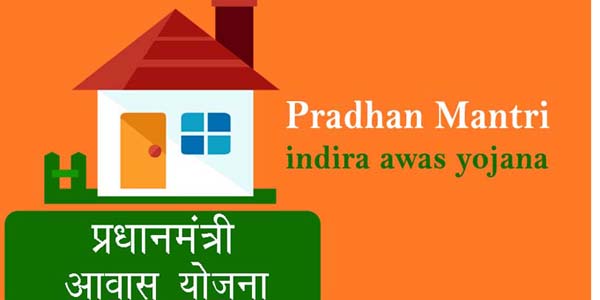Indira Awas Yojana (IAY) was a sub-scheme of the Rural Landless Employment Guarantee Programme (RLEGP). It is a social welfare program first launched by Rajiv Gandhi in 1985.
The Programme was the housing program of the Ministry of Rural Development. The main motive was to work towards constructing houses for rural India’s below-poverty-line population.
In the financial year 1995-96, the program extended to widows and close relatives of defence personnel killed in action and from 1997-98.
The program extended to Scheduled Castes/Scheduled Tribes and free bonded labourers in Rural areas. The Grama Sabha selected the beneficiary list.

60% of the total scheme allocation should be utilised for the up-gradation/construction of dwelling units for SC/ST BPL households.
40% of the allocation is for non-SC/ST BPL households—and 3% of the allocation is for physically and mentally challenged persons. The Centre and State governments fund the scheme in 75:25 ratios.
From 2016-17, IAY was renamed Pradhan Mantri Awas Yojana (Gramin). The share of the Central and state government for this scheme is a 60:40 ratio, which means the central share is Rs 72,000/- and the State share is 48,000/-.
RCC roofing costs Rs 50000/-. The total Unit cost is Rs 1.7 Lakhs. The total allocation cost is Rs 2304.405 Crores.
Contents
Key Features of IAY
- Homes constructed Under IAY were under the joint ownership of wife and husband, except unmarried, widowed, and divorced. If the house was constructed on the eligibility of disability, then they maintained sole ownership.
- The construction is carried out by the beneficiary only. Any external involvement, like contractors or agencies, was not permissible. If the government finds such things, it withholds or confiscates the funding. Beneficiaries can acquire support from NGOs, youth clubs, and others for monitoring and assisting during construction.
- This scheme’s main objective and initiative are to promote an eco-friendly and sustainable mode of building houses. Locally sourced materials are preferred.
- The funds are released in instalments.
- 1st instalment of 25% of the total cost given on the sanctioned day of the Indira Awas Yojana.
- 2nd instalments, 60% of the total cost, will be given upon reaching the lintel level.
- 3rd and final remaining 15% of the total cost is given on the house’s total completion, including the bathroom and lavatory and the beneficiary living in the house.
- After receiving the 1st instalment, the beneficiary had nine months to complete the first stage, and the same after 2nd instalment, only nine months to complete the house.
Benefits of IAY
- Under the scheme, residents must design their houses according to their requirements.
- Aim to use locally sourced materials for construction that lasts at least 30 years.
- IAY is promoting eco-friendly and environmentally sustainable construction techniques and generating employment.
- IAY encouraged Panchayat to spearhead change in their constituency so the program could be effectively implemented across the nation.
- The scheme supports the construction of houses with required provisions like workplaces.
Eligibility for the Indira Awas Yojana
IAY scheme’s main aim is to construct houses for poor people in rural India. Other than BPL, people below are also eligible for this scheme.
- Disabled or disabled citizens
- Ex-service Personnel
- The Schedule Caste and Scheduled Tribe category people
- Free bonded labourers
- Widows
- Parliamentary Personnel killed in action and next of kin of defence.
- The marginalised sector of society citizens.
Special Projects by IAY
IAY scheme made accessible reserve funds from the Central Government.
- She is rehabilitating the below-poverty-line families affected by the violent outbreaks.
- She is rehabilitating the below-poverty-line families affected by natural calamities.
- We are offering settlement to the families forced to relocate to the international borders.
- Providing settlement for scavengers, tribal societies, and labourers
- Providing rehabilitation for individuals affected by occupational diseases and “Kala-azar.”
Official Website for IAY